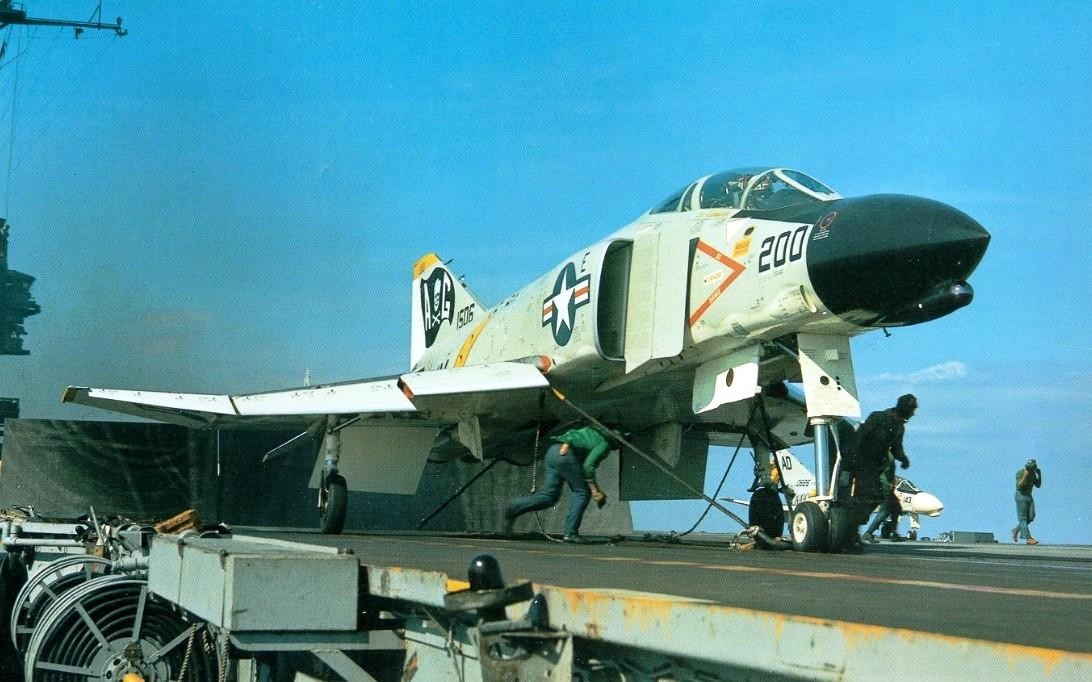 |
| size image : 1092 x 682 |
F-4 Phantom II (wallpaper 4)
F-4 Phantom II fighter aircraft images wallpaper gallery 4. F-4 Phantom II fighter airplane pictures and images collection 4.
The Phantom was the first multiservice aircraft, flying concurrently with the U.S. Navy, Air Force and Marine Corps. It is the first and only aircraft ever to be flown concurrently by both the Blue Angels and the Thunderbirds. The name Phantom II was chosen to declare the aircraft’s lineage from McDonnell’s FD-1 Phantom which was the first all-jet aircraft the Navy operated. Phantom II production ended in 1979 after over 5,000 in 15 different models had been built -- more than 2,600 for the USAF, about 1,200 for the Navy and Marine Corps, and the rest for other nations, including to Israel, Iran, Greece, Spain, Turkey, South Korea, West Germany, Australia, Japan, and Great Britain. The US Air Force purchased more than 2,600 F-4s and, as a result, a large portion of the Air Force's pilots, navigators and maintenance people spent a great deal of their careers around and in F-4s. F-4 Phantom II (wallpaper 4). F-4 Phantom II fighter aircraft images wallpaper gallery 4. F-4 Phantom II fighter airplane pictures and images collection 4. Used extensively in the Vietnam War, later versions of the aircraft were still active in the US Air Force inventory well into the 1990s. F-4s are no longer in the USAF inventory but are still flown by a number of other nations. In the 1960s, most of the thousands of McDonnell employees were involved in delivering the Phantom. Between 1966-67, production averaged 63 F-4 aircraft each month. Production peaked at 72 Phantom aircraft a month in 1967. By 1978, production was 4 to 6 aircraft a month. In all, production of the F-4 contributed to more than 1 million man-years of employment at McDonnell. The Phantom is powered by twin General Electric J79 engines, mounted side by side along the length of the fuselage. Of the engine's sub-models, the most important is the J79-GE-17. Each engine delivers a thrust of 5,385 kg. without using its afterburners, and 8,210 kg. thrust with the afterburners. The Phantom is a two seater, with the navigator/WSO sitting behind the pilot. In case of an emergency, the WSO can fly the plane from his seat. The Air Force and the Navy expressed notable dismay over the relatively poor and unforgiving characteristics of the F-4 aircraft at high angles of attack. The F-4 exhibited a sudden directional divergence (nose slice) and other control-induced characteristics at high angles of attack that made the aircraft susceptible to loss of control and inadvertent spins. The two services lost a combined total of over 100 F-4’s to accidents involving these characteristics during the operational life of the aircraft. F-4 Phantom II (wallpaper 4). F-4 Phantom II fighter aircraft images wallpaper gallery 4. F-4 Phantom II fighter airplane pictures and images collection 4.
F-4 Phantom II (Wallpaper 1)F-4 Phantom II fighter aircraft images wallpaper gallery 4. F-4 Phantom II fighter airplane pictures and images collection 4.
The Phantom was the first multiservice aircraft, flying concurrently with the U.S. Navy, Air Force and Marine Corps. It is the first and only aircraft ever to be flown concurrently by both the Blue Angels and the Thunderbirds. The name Phantom II was chosen to declare the aircraft’s lineage from McDonnell’s FD-1 Phantom which was the first all-jet aircraft the Navy operated. Phantom II production ended in 1979 after over 5,000 in 15 different models had been built -- more than 2,600 for the USAF, about 1,200 for the Navy and Marine Corps, and the rest for other nations, including to Israel, Iran, Greece, Spain, Turkey, South Korea, West Germany, Australia, Japan, and Great Britain. The US Air Force purchased more than 2,600 F-4s and, as a result, a large portion of the Air Force's pilots, navigators and maintenance people spent a great deal of their careers around and in F-4s. F-4 Phantom II (wallpaper 4). F-4 Phantom II fighter aircraft images wallpaper gallery 4. F-4 Phantom II fighter airplane pictures and images collection 4. Used extensively in the Vietnam War, later versions of the aircraft were still active in the US Air Force inventory well into the 1990s. F-4s are no longer in the USAF inventory but are still flown by a number of other nations. In the 1960s, most of the thousands of McDonnell employees were involved in delivering the Phantom. Between 1966-67, production averaged 63 F-4 aircraft each month. Production peaked at 72 Phantom aircraft a month in 1967. By 1978, production was 4 to 6 aircraft a month. In all, production of the F-4 contributed to more than 1 million man-years of employment at McDonnell. The Phantom is powered by twin General Electric J79 engines, mounted side by side along the length of the fuselage. Of the engine's sub-models, the most important is the J79-GE-17. Each engine delivers a thrust of 5,385 kg. without using its afterburners, and 8,210 kg. thrust with the afterburners. The Phantom is a two seater, with the navigator/WSO sitting behind the pilot. In case of an emergency, the WSO can fly the plane from his seat. The Air Force and the Navy expressed notable dismay over the relatively poor and unforgiving characteristics of the F-4 aircraft at high angles of attack. The F-4 exhibited a sudden directional divergence (nose slice) and other control-induced characteristics at high angles of attack that made the aircraft susceptible to loss of control and inadvertent spins. The two services lost a combined total of over 100 F-4’s to accidents involving these characteristics during the operational life of the aircraft. F-4 Phantom II (wallpaper 4). F-4 Phantom II fighter aircraft images wallpaper gallery 4. F-4 Phantom II fighter airplane pictures and images collection 4.
F-4 Phantom II (Wallpaper 2)
F-4 Phantom II (Wallpaper 3)
No comments:
Post a Comment